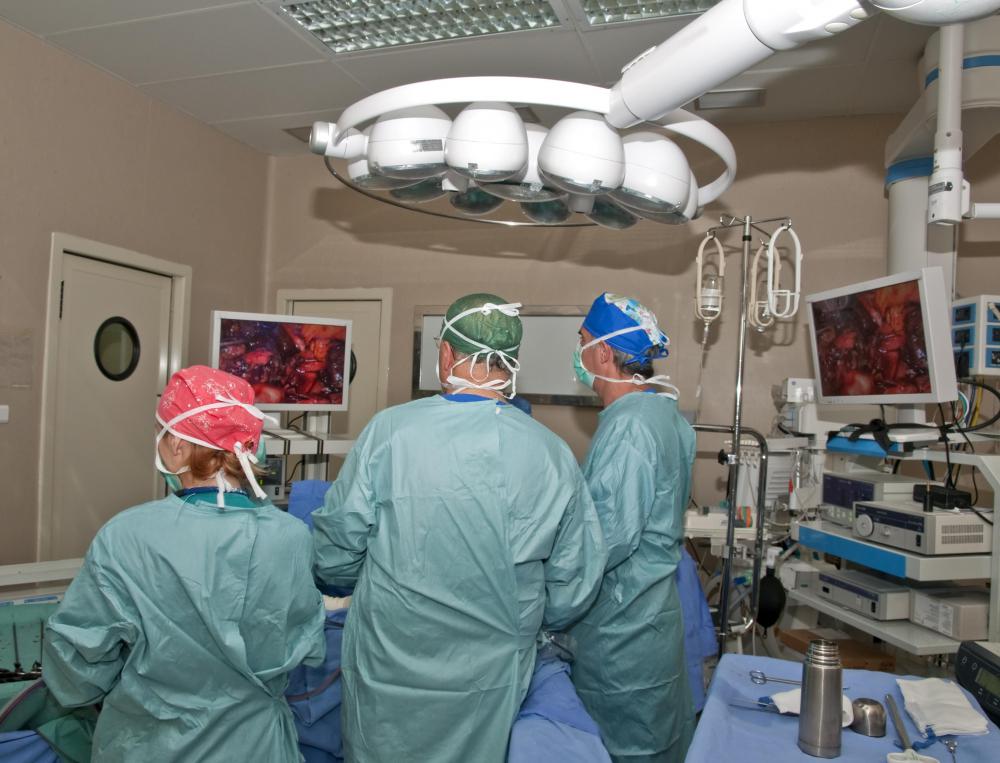At InfoBloom, we're committed to delivering accurate, trustworthy information. Our expert-authored content is rigorously fact-checked and sourced from credible authorities. Discover how we uphold the highest standards in providing you with reliable knowledge.
What Are Chondrocytes?
Chondrocytes are mature cells found in cartilage. They make up the cellular matrix of cartilage, performing a number of functions within the tissue, including facilitating the exchange of fluids through the gelatinous layers. Because cartilage lacks vascularization, it relies on this exchange to receive nutrients and express waste materials. Fully mature chondrocytes tend to be round, and they may cluster together in small groups within the network of the cartilage.
The progenitors of these cells arise in the bone marrow, in a form of stem cell. Stem cells are capable of differentiating into several different types of cell, depending on the need. When they differentiate into cartilage cells, they start out as chondroblasts, actively producing secretions of chondrin, the primary substance in cartilage, to build and repair the tissue. Once a chondroblast becomes totally surrounded, it is a mature chondrocyte. These cells can be found in small gaps within the cartilage known as lacunae.

Chondrocytes are not capable of cell division. They can produce secretions to support and repair the cartilage matrix, and as discussed above, the facilitate the exchange of materials between the cartilage and the surrounding material. Depending on what type of cartilage a cell is in, it may have a slightly different composition; elastic, hyaline, and fibrocartilage are all unique, designed to meet various needs within the body.

More yielding than bone and tougher than muscle, cartilage can be found in a number of areas of the body. It is often present around joints, and it can be found in the ears as well. Under normal circumstances, cartilage wears down over time and chondrocytes replace and repair it as needed. There are situations in which cartilage can become so damaged that the cells cannot repair it, however, as seen in the case of surgeries in which cartilage must be scraped away to correct a problem or access a surgical site. In other cases, the body does not heal properly even though it should, and the cartilage does not repair itself as a result.
Transplants are available to address problems with the cartilage. Sometimes, the transplant can be done with the patient's own cells, and in other cases, the preparation may use cells from someone else. Replacing cartilage after a severe injury or major surgery can be important for more complete healing, which can make transplant one of the steps taken by a patient and the care team along the path to recovery.
AS FEATURED ON:
AS FEATURED ON:












Discussion Comments
@Clairdelune - I think the article explains how chondrocytes, a part of cartilage, repairs and nourishes this tissue. But, for some reason, the cartilage becomes so damaged that chondrocytes can no longer repair the damage. And the joints become more and more diseased.
Research in stem cell transplants, as the article says, is used in cases of a severe injury. Maybe this works well on a younger person, but I've heard that more research is needed on stem cell transplants to repair cartilage damaged by arthritis. It is not being used at this time.
I was reading a pamphlet about how cartilage gradually deteriorates around joints and leads to osteoarthritis. Cartilage is about 75% water, and it is made of collagen, proteoglycans and chondrocytes. I don't know what all these are, but they help the joints to move properly.
I asked a nurse friend of mine what happens inside the joints that destroys this cartilage and causes the raw rubbing together of the bones.
She told me that some researchers think it may be genetic. Others think it is a disease caused by wear and tear. But that doesn't really explain why some people get it and not others. It usually starts in your 50s and 60s.
It's a painful and damaging condition and it makes doing your usual activities very difficult.
More research is being done to find an answer.
Post your comments